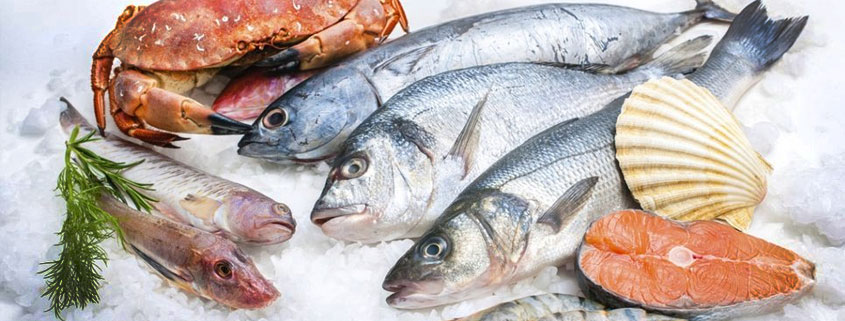How to Invest in Seafood Stocks
Some exotic stocks on global markets may provide your best opportunity to invest in seafood stocks.
Fishing is one of humanity’s most ancient food-gathering methods. But in terms ofpublicly traded companies, the industry is still fairly immature.
However, there are a handful of firms – including several that trade on global exchanges– that could lure investors into an industry that is essentially a bet on the increasing demand for high-protein, healthy diets.
“It’s [a] sustained and long-term and permanent demand,” says Ignacio Kleiman, managing partner of Antarctica Advisors, a food industry investment bank in Florida.
Growing protein. Seafood is a faster-growing protein segment than chicken, beef and pork, Kleiman says. It also represents healthier protein.
Growth areas include the U.S., which is a large market with relatively low per capita seafood consumption, and Asia, which has a higher percentage of seafood eaters, but also a large and growing population with disposable income, Kleiman says.
Some of the strongest North American seafood companies are Canada-based Clearwater Seafood and High Liner Foods, both which trade on the Tokyo Stock Exchange; as well as Texas-headquartered Omega Protein Corp. (ticker: OME) and Norway’s Marine Harvest (MHG), Kleiman says.
Each company is unique with different fundamentals, and a basket of them would give an investor exposure to virtually all the segments of the general seafood industry, Kleiman says.
Clearwater, which is focused on shellfish, owns fishing rights and processes at sea and on land. High Liner is a land-based processor that sells branded products to the food-service industry. Marine Harvest is a major salmon farmer. Omega Protein catches fish it processes into meal and oil for animal feed, and it also has a human nutrition segment.
Making fishmeal. Kleiman says investors should especially consider companies with exposure to fishmeal, which is used in animal feed in the agriculture industry and also by the growing pet food industry.
In addition to Omega Protein, Kleiman notes that South Africa’s Oceana Group, which trades on the Johannesburg Stock Exchange, recently bought Louisiana-based fishmeal and fish oil producer Daybrook Fisheries for $382.3 million. Kleiman’s company acted as a financial advisor for Oceana in the transaction.
For exposure to the seafood industry, Kleiman recommends investors look toward seafood producers and processors, rather than companies like food-service giant Sysco Corp. (SYY), which has significant seafood businesses but can get squeezed if producers raise prices more than can be passed on to food retailers, restaurants and end consumers.
Farming salmon. There is more room for growth in the aquaculture segment of the industry than in the wild-caught segment, Kleinman says. Salmon in particular is seeing growing consumption, and companies that farm the pink-fleshed fish represent potential volume growth.
Kolbjorn Giskeodegard, a Norway-based senior analyst covering seafood companies for Sweden-headquartered Nordea Markets, recommends Faroese salmon farmer Bakkafrost because of its strong balance sheet, operational setup and cost position in the sector. Bakkafrost trades on the Oslo Stock Exchange.
Giskeodegard also likes Marine Harvest. Although it has lower margins, the market-leading salmon farmer’s stock has much higher liquidity and is easier for investors to access, he says.
A risk to the seafood industry is its cyclicality, Giskeodegard says.
Salmon farming, in particular, is like farming any other kind of livestock, with the risk of fish dying unexpectedly or being exposed to diseases, Giskeodegard says. Additionally, it can take two to three years for fertilized fish eggs to grow to the normal harvest size of 5 kilograms, and a lot can happen with the market in that time.
Rebuilding fisheries. Aside from publicly traded companies, there are some seafood opportunities for well-heeled investors like family offices, foundations, institutional investors or individuals prepared to plunk down $1 million to $5 million.
A report from asset management firm Encourage Capital shows how impact investors can earn returns while helping rebuild depleted fisheries around the globe. It points to fisheries in Brazil, Chile and the Philippines, which account for around 7 percent of global fish supply.
It can take as much as 10 years to replenish a fishery, says Jason Scott, comanaging partner at Encourage. That long view could be difficult to tackle for listed companies, which face shareholder demands for quarterly returns, but it can work for private investors and nonpublic companies.
Scott hopes the report will galvanize investment in seafood, which he sees as an important emerging industry like solar power and social media. Crowdfunding opportunities could develop for retail investors interested in getting in on an early stage of the sustainable seafood movement, he says.
SOURCE: U.S. News | Money




